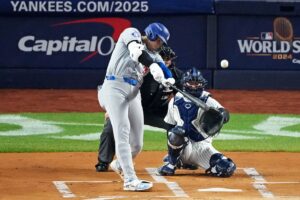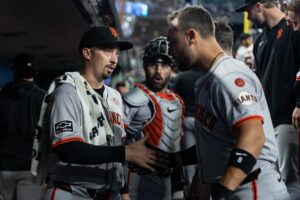Jason Heyward finished last season with a 6 WAR season again and a third Gold Glove award, and was widely considered the top position player available in free agency. He was 26 years old and just beginning to scratch the surface of his potential. But this season’s Heyward has been a new version. Even his limited power is now gone. The bat speed has disappeared. Even the once-revered approach at the plate has declined. So what happened to Jason Heyward? Is this a bad year, or a sign of things to come?
What happened to Jason Heyward?
The (Mostly) Braves Years
The Atlanta Braves took Heyward 14th overall in 2007. He came blessed with exceptional raw power, an advanced approach, and abilities in the outfield that very few prep stars are capable of demonstrating. He was a premium prospect. In 2010, Baseball America’s #1 prospect was Heyward, ahead of Stephen Strasburg and Giancarlo Stanton, and no one scoffed. Heyward was that good. A future all-star. A future Gold Glove winner. The potential to be a Hall of Fame type guy.
His rookie season was something else. Heyward hit everything, and were it not for the rookie season of fellow super-prospect Buster Posey, Heyward would have taken home the National League Rookie of the Year award. Heyward finished with a .277/.393/.456/.849 line with a 134 WRC+, 18 home runs, 11 stolen bases and some excellent defense in the outfield. He had arrived, and baseball would have to take note.
However, for Heyward, the feared sophomore jinx hit hard. He regressed in all areas, with the exception of his blooming defensive super-stardom, finishing 2011 with a .227/.319/.389/.708 line. Even his massive walk rate took a hit. He rebounded in a fantastic way in 2012; he won his first Gold Glove award, managed 27 home runs and 21 stolen bases, and hit .269/.335/.479/.814. He was back, and once again the sky was the limit for Heyward.
Yet 2013-2015 saw a different Hayward emerge, one who lacked confidence and power. Still consistently a very good player, he posted WARs of 3.4, 5.1, and 6.0. Never truly regaining the power he had displayed in the earlier years of his career, Heyward maxed out in those three seasons at 14 home runs. With the bad came the good. Heyward may have slid as an offensive threat, but he had at this point established himself as the premier corner outfielder in baseball defensively.
A Move to Chicago
So who was Jason Heyward in the eyes of baseball? On December 15, 2015, everyone found out. After one season with the St. Louis Cardinals, Heyward signed an eight-year, $184 million contract with the Chicago Cubs. He apparently turned down higher offers for the opportunity to play with “baseball’s best team”, according to Heyward. With a young core of fledgling superstars and one of MLB‘s deepest pitching staffs, Heyward was the final piece to a championship puzzle.
The 2016 Cubs got off to a blistering start, winning 24 of their first 30 games. As a team, they really didn’t hit a speed bump until late in the season. However, through the month of May, Heyward had only managed a .219 average with one home run in almost 200 plate appearances. The pinnacle of Heyward’s first year in Chicago came in June, where he managed to hit .257 with three home runs. A lack of success by most standards.
When it was all said and done, Heyward scraped together a line of .230/.306/.325/.631. There is literally no offensive metric, conventional or otherwise, that makes his season look better. His seven home runs do not instill confidence. His .094 ISO is atrocious. His WRC+ of 72 ranks him 143 out of 146 qualified hitters. Heyward’s soft contact percentage of 27.1% led all of Major League Baseball in 2016.
A historically bad season indeed.
Jason Heyward has shown in his career an ability to bounce back from adversity. He has continued to be an elite defender, a model citizen, and, by all accounts, a beloved teammate on winning clubs. But at this point, in what should be the start to his peak years, Heyward looks lost. Can he salvage this year that went so wrong in so many ways? Or has Heyward begun to carve out a legacy, at 27, of a player who got his big money and transformed into a shell of the player who earned it?
When it’s all said and done, however, bringing a World Series title to Chicago would make a lot of people forget the details.
Main Photo:






